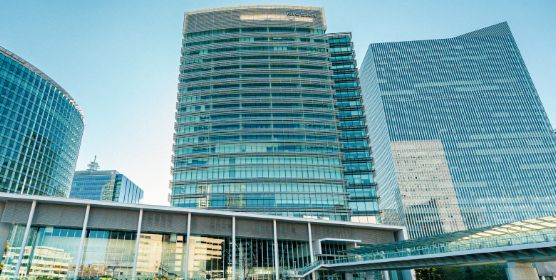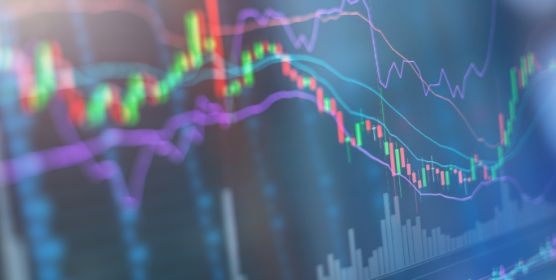GRI Guideline 2012
The GRI guidline table shows published/ disclosed information on the sustainability report and Nissan global website.
Profile
Management Approach and Performance Index
Sep. 2012
Profile
Strategy and Analysis
| Section | Index | Sustainability Report 2012 |
Website |
|---|---|---|---|
| 1.1 | Statement from the most senior decisionmaker of the organization (e.g., CEO, chair, or equivalent senior position) about the relevance of sustainability to the organization and its strategy. | P3-4 CEO Interview |
|
| 1.2 | Description of key impacts, risks, and opportunities. | P83-84 Business and Other Risks |
Financial Information as of March 31, 2012 (The English translation of the "Yukashoken-Houkokusho" for the year ended March 31, 2012) (P17-22) |
Organizational Profile
| Section | Index | Sustainability Report 2012 |
Website |
|---|---|---|---|
| 2.1 | Name of the organization. | P87 | |
| 2.2 | Primary brands, products, and/or services. | Model Line Up (Passenger) Model Line Up (Commercial) |
|
| 2.3 | Operational structure of the organization, including main divisions, operating companies, subsidiaries, and joint ventures. | Financial Information as of March 31, 2012 (The English translation of the "Yukashoken-Houkokusho" for the year ended March 31, 2012) (P7-11) | |
| 2.4 | Location of organization's headquarters. | P87 | |
| 2.5 | Number of countries where the organization operates, and names of countries with either major operations or that are specifically relevant to the sustainability issues covered in the report. | P77 | |
| 2.6 | Nature of ownership and legal form. | P2 | |
| 2.7 | Markets served (including geographic breakdown, sectors served, and types of customers/beneficiaries). | Financial Information as of March 31, 2012 (The English translation of the "Yukashoken-Houkokusho" for the year ended March 31, 2012) (P14) | |
| 2.8 | Scale of the reporting organization, including: -Number of employees; |
P82 | |
| -Net sales (for private sector organizations) or net revenues (for public sector organizations); | P81 | ||
| -Total capitalization broken down in terms of debt and equity (for private sector organizations); and | Financial Information as of March 31, 2012 (The English translation of the "Yukashoken-Houkokusho" for the year ended March 31, 2012) (P61) | ||
| -Quantity of products or services provided. | P82 | ||
| 2.9 | Significant changes during the reporting period regarding size, structure, or ownership including: -The location of, or changes in operations, including facility openings, closings, and expansions; and |
Financial Information as of March 31, 2012 (The English translation of the "Yukashoken-Houkokusho" for the year ended March 31, 2012) (P30) | |
| Changes in the share capital structure and other capital formation, maintenance, and alteration operations (for private sector organizations). | Financial Information as of March 31, 2012 (The English translation of the "Yukashoken-Houkokusho" for the year ended March 31, 2012) (P7-10) Financial Information as of March 31, 2012 (The English translation of the "Yukashoken-Houkokusho" for the year ended March 31, 2012) (P69-70) |
||
| 2.10 | Awards received in the reporting period. | Financial Information as of March 31, 2012 (The English translation of the "Yukashoken-Houkokusho" for the year ended March 31, 2012) (P23) |
Report Parameters
Report Profile
| Section | Index | Sustainability Report 2012 |
Website |
|---|---|---|---|
| 3.1 | Reporting period (e.g., fiscal/calendar year) for information provided. | P2 | |
| 3.2 | Date of most recent previous report (if any). | Report back issues | |
| 3.3 | Reporting cycle (annual, biennial, etc.) | P2 | |
| 3.4 | Contact point for questions regarding the report or its contents. | P87 |
Report Scope and Boundary
| Section | Index | Sustainability Report 2012 |
Website |
|---|---|---|---|
| 3.5 | Process for defining report content, including: -Determining materiality; |
P2 | |
| -Prioritizing topics within the report; and | P2 | ||
| -Identifying stakeholders the organization expects to use the report. | N/D | ||
| 3.6 | Boundary of the report (e.g., countries, divisions, subsidiaries, leased facilities, joint ventures, suppliers). See GRI Boundary Protocol for further guidance. | P82 | |
| 3.7 | State any specific limitations on the scope or boundary of the report8. | P2 | |
| 3.8 | Basis for reporting on joint ventures, subsidiaries, leased facilities, outsourced operations, and other entities that can significantly affect comparability from period to period and/or between organizations. | P83-84 | Financial Information as of March 31, 2012 (The English translation of the "Yukashoken-Houkokusho" for the year ended March 31, 2012) (P17-22) |
| 3.9 | Data measurement techniques and the bases of calculations, including assumptions and techniques underlying estimations applied to the compilation of the Indicators and other information in the report. | N/D | |
| 3.10 | Explanation of the effect of any re-statements of information provided in earlier reports, and the reasons for such re-statement (e.g., mergers/ acquisitions, change of base years/periods, nature of business, measurement methods). | N/D | |
| 3.11 | Significant changes from previous reporting periods in the scope, boundary, or measurement methods applied in the report. | N/D |
GRI Content Index
| Section | Index | Sustainability Report 2012 |
Website |
|---|---|---|---|
| 3.12 | Table identifying the location of the Standard Disclosures in the report. | This table |
Assurance
| Section | Index | Sustainability Report 2012 |
Website |
|---|---|---|---|
| 3.13 | Policy and current practice with regard to seeking external assurance for the report. If not included in the assurance report accompanying the sustainability report, explain the scope and basis of any external assurance provided. Also explain the relationship between the reporting organization and the assurance provider(s). | P86-87 |
Governance, Commitments, and Engagement
Governance
| Section | Index | Sustainability Report 2012 |
Website |
|---|---|---|---|
| 4.1 | Governance structure of the organization, including committees under the highest governance body responsible for specific tasks, such as setting strategy or organizational oversight. | P17 | Financial Information as of March 31, 2012 (The English translation of the "Yukashoken-Houkokusho" for the year ended March 31, 2012) (P49-51) |
| 4.2 | Indicate whether the Chair of the highest governance body is also an executive officer (and, if so, their function within the organization's management and the reasons for this arrangement). | P17 | Financial Information as of March 31, 2012 (The English translation of the "Yukashoken-Houkokusho" for the year ended March 31, 2012) (P49-51) |
| 4.3 | For organizations that have a unitary board structure, state the number of members of the highest governance body that are independent and/or non-executive members. | Financial Information as of March 31, 2012 (The English translation of the "Yukashoken-Houkokusho" for the year ended March 31, 2012) (P49-51) | |
| 4.4 | Mechanisms for shareholders and employees to provide recommendations or direction to the highest governance body. | P18 P56-57 |
|
| 4.5 | Linkage between compensation for members of the highest governance body, senior managers, and executives (including departure arrangements), and the organization's performance (including social and environmental performance). | Financial Information as of March 31, 2012 (The English translation of the "Yukashoken-Houkokusho" for the year ended March 31, 2012) (P54) | |
| 4.6 | Processes in place for the highest governance body to ensure conflicts of interest are avoided. | N/D | - |
| 4.7 | Process for determining the qualifications and expertise of the members of the highest governance body for guiding the organization's strategy on economic, environmental, and social topics. | N/D | - |
| 4.8 | Internally developed statements of mission or values, codes of conduct, and principles relevant to economic, environmental, and social performance and the status of their implementation. | Financial Information as of March 31, 2012 (The English translation of the "Yukashoken-Houkokusho" for the year ended March 31, 2012)(P23-24) | |
| 4.9 | Procedures of the highest governance body for overseeing the organization's identification and management of economic, environmental, and social performance, including relevant risks and opportunities, and adherence or compliance with internationally agreed standards, codes of conduct, and principles. | P11 P14-15 P17 P25 P70 |
|
| 4.10 | Processes for evaluating the highest governance body's own performance, particularly with respect to economic, environmental, and social performance. | P11 P14-15 P17 P25 P70 |
Commitments to External Initiatives
| Section | Index | Sustainability Report 2012 |
Website |
|---|---|---|---|
| 4.11 | Explanation of whether and how the precautionary approach or principle is addressed by the organization. | N/D | |
| 4.12 | Externally developed economic, environmental, and social charters, principles, or other initiatives to which the organization subscribes or endorses. | P18 | |
| 4.13 | Memberships in associations (such as industry associations) and/or national/international advocacy organizations in which the organization: -Has positions in governance bodies; |
N/D | |
| -Participates in projects or committees; | |||
| -Provides substantive funding beyond routine membership dues; or | |||
| -Views membership as strategic. |
Stakeholder Engagement
| Section | Index | Sustainability Report 2012 |
Website |
|---|---|---|---|
| 4.14 | List of stakeholder groups engaged by the organization. | N/D | |
| 4.15 | Basis for identification and selection of stakeholders with whom to engage. | N/D | |
| 4.16 | Approaches to stakeholder engagement, including frequency of engagement by type and by stakeholder group. | ||
| 4.17 | Key topics and concerns that have been raised through stakeholder engagement, and how the organization has responded to those key topics and concerns, including through its reporting. | P60 P67 P69-74 |
Management Approach and Performance Index
Economic
Economic Performance
| Section | Index | Sustainability Report 2012 |
Website |
|---|---|---|---|
| EC1 | Direct economic value generated and distributed, including revenues, operating costs, employee compensation, donations and other community investments, retained earnings, and payments to capital providers and governments. | P77 P82 |
Financial Information as of March 31, 2012 (The English translation of the "Yukashoken-Houkokusho" for the year ended March 31, 2012) (P11) Financial Information as of March 31, 2012 (The English translation of the "Yukashoken-Houkokusho" for the year ended March 31, 2012) (P46) |
| EC2 | Financial implications and other risks and opportunities for the organization's activities due to climate change. | P83-84 | Financial Information as of March 31, 2012 (The English translation of the "Yukashoken-Houkokusho" for the year ended March 31, 2012) (P17-22) |
| EC3 | Coverage of the organization's defined benefit plan obligations. | N/D | |
| EC4 | Significant financial assistance received from government. | N/A |
Market Presence
| Section | Index | Sustainability Report 2012 |
Website |
|---|---|---|---|
| EC5 | Range of ratios of standard entry level wage compared to local minimum wage at significant locations of operation. | N/D | |
| EC6 | Policy, practices, and proportion of spending on locally-based suppliers at significant locations of operation. | P66-68 | |
| EC7 | Procedures for local hiring and proportion of senior management hired from the local community at locations of significant operation. | N/D |
Indirect Economic Impacts
| Section | Index | Sustainability Report 2012 |
Website |
|---|---|---|---|
| EC8 | Development and impact of infrastructure investments and services provided primarily for public benefit through commercial, inkind, or pro bono engagement. | N/D | |
| EC9 | Understanding and describing significant indirect economic impacts, including the extent of impacts. | P83-84 | Financial Information as of March 31, 2012 (The English translation of the "Yukashoken-Houkokusho" for the year ended March 31, 2012) (P17-22) |
Environmental
Materials
| Section | Index | Sustainability Report 2012 |
Website |
|---|---|---|---|
| EN1 | Materials used by weight or volume. | N/D | |
| EN2 | Percentage of materials used that are recycled input materials. | P34 |
Energy
| Section | Index | Sustainability Report 2012 |
Website |
|---|---|---|---|
| EN3 | Direct energy consumption by primary energy source. | P32 | |
| EN4 | Indirect energy consumption by primary source. | P32 | |
| EN5 | Energy saved due to conservation and efficiency improvements. | P32 | |
| EN6 | Initiatives to provide energy-efficient or renewable energy based products and services, and reductions in energy requirements as a result of these initiatives. | P26-31 | |
| EN7 | Initiatives to reduce indirect energy consumption and reductions achieved. | P32-33 |
Water
| Section | Index | Sustainability Report 2012 |
Website |
|---|---|---|---|
| EN8 | Total water withdrawal by source. | P35 | |
| EN9 | Water sources significantly affected by withdrawal of water. | N/A | |
| EN10 | Percentage and total volume of water recycled and reused. | N/D |
Biodiversity
| Section | Index | Sustainability Report 2012 |
Website |
|---|---|---|---|
| EN11 | Location and size of land owned, leased, managed in, or adjacent to, protected areas and areas of high biodiversity value outside protected areas. | N/A | |
| EN12 | Description of significant impacts of activities, products, and services on biodiversity in protected areas and areas of high biodiversity value outside protected areas. | P37-38 | |
| EN13 | Habitats protected or restored. | N/A | |
| EN14 | Strategies, current actions, and future plans for managing impacts on biodiversity. | P23-25 P37 |
|
| EN15 | Number of IUCN Red List species and national conservation list species with habitats in areas affected by operations, by level of extinction risk. | N/A |
Emissions, Effluents, and Waste
| Section | Index | Sustainability Report 2012 |
Website |
|---|---|---|---|
| EN16 | Total direct and indirect greenhouse gas emissions by weight. | P26-33 | |
| EN17 | Other relevant indirect greenhouse gas emissions by weight. | N/D | |
| EN18 | Initiatives to reduce greenhouse gas emissions and reductions achieved. | N/D | |
| EN19 | Emissions of ozone-depleting substances by weight. | N/D | |
| EN20 | NO, SO, and other significant air emissions by type and weight. | N/D | |
| EN21 | Total water discharge by quality and destination. | P39 | |
| EN22 | Total weight of waste by type and disposal method. | P35 | Recycling Condiions under The Law Concerning Recycling Measures for End-of-Life Vehicles. (Japanese Only) |
| EN23 | Total number and volume of significant spills. | N/A | |
| EN24 | Weight of transported, imported, exported, or treated waste deemed hazardous under the terms of the Basel Convention Annex I, II, III, and VIII, and percentage of transported waste shipped internationally. | N/A | |
| EN25 | Identity, size, protected status, and biodiversity value of water bodies and related habitats significantly affected by the reporting organization's discharges of water and runoff. | N/A |
Products and Services
Compliance
| Section | Index | Sustainability Report 2012 |
Website |
|---|---|---|---|
| EN28 | Monetary value of significant fines and total number of non-monetary sanctions for noncompliance with environmental laws and regulations. | N/A |
Transport
Overall
| Section | Index | Sustainability Report 2012 |
Website |
|---|---|---|---|
| EN30 | Total environmental protection expenditures and investments by type. | N/D |
Labor Practices and Decent Work
Employment
| Section | Index | Sustainability Report 2012 |
Website |
|---|---|---|---|
| LA1 | Total workforce by employment type, employment contract, and region. | P82 | |
| LA2 | Total number and rate of employee turnover by age group, gender, and region. | N/D | |
| LA3 | Benefits provided to full-time employees that are not provided to temporary or part-time employees, by major operations. | N/D |
Labor/Management Relations
| Section | Index | Sustainability Report 2012 |
Website |
|---|---|---|---|
| LA4 | Percentage of employees covered by collective bargaining agreements. | P82 | |
| LA5 | Minimum notice period(s) regarding operational changes, including whether it is specified in collective agreements. | N/D |
Occupational Health and Safety
| Section | Index | Sustainability Report 2012 |
Website |
|---|---|---|---|
| LA6 | Percentage of total workforce represented in formal joint management worker health and safety committees that help monitor and advise on occupational health and safety programs. | N/D | |
| LA7 | Rates of injury, occupational diseases, lost days, and absenteeism, and number of workrelated fatalities by region. | N/D | |
| LA8 | Education, training, counseling, prevention, and risk-control programs in place to assist workforce members, their families, or community members regarding serious diseases. | P63-65 | |
| LA9 | Health and safety topics covered in formal agreements with trade unions. | P63-65 |
Training and Education
| Section | Index | Sustainability Report 2012 |
Website |
|---|---|---|---|
| LA10 | Average hours of training per year per employee by employee category. | N/D | |
| LA11 | Programs for skills management and lifelong learning that support the continued employability of employees and assist them in managing career endings. | P62 P79 |
|
| LA12 | Percentage of employees receiving regular performance and career development reviews. | P62 P79 |
Diversity and Equal Opportunity
| Section | Index | Sustainability Report 2012 |
Website |
|---|---|---|---|
| LA13 | Composition of governance bodies and breakdown of employees per category according to gender, age group, minority group membership, and other indicators of diversity. | N/D | |
| LA14 | Ratio of basic salary of men to women by employee category. | N/D |
Human Rights
Investment and Procurement Practices
| Section | Index | Sustainability Report 2012 |
Website |
|---|---|---|---|
| HR1 | Percentage and total number of significant investment agreements that include human rights clauses or that have undergone human rights screening. | N/D | |
| HR2 | Percentage of significant suppliers and contractors that have undergone screening on human rights and actions taken. | N/D | |
| HR3 | Total hours of employee training on policies and procedures concerning aspects of human rights that are relevant to operations, including the percentage of employees trained. | N/D |
Non-Discrimination
| Section | Index | Sustainability Report 2012 |
Website |
|---|---|---|---|
| HR4 | Total number of incidents of discrimination and actions taken. | N/A |
Freedom of Association and Collective Bargaining
| Section | Index | Sustainability Report 2012 |
Website |
|---|---|---|---|
| HR5 | Operations identified in which the right to exercise freedom of association and collective bargaining may be at significant risk, and actions taken to support these rights. | N/A |
Child Labor
| Section | Index | Sustainability Report 2012 |
Website |
|---|---|---|---|
| HR6 | Operations identified as having significant risk for incidents of child labor, and measures taken to contribute to the elimination of child labor. | N/A |
Forced and Compulsory Labor
| Section | Index | Sustainability Report 2012 |
Website |
|---|---|---|---|
| HR7 | Operations identified as having significant risk for incidents of forced or compulsory labor, and measures to contribute to the elimination of forced or compulsory labor. | N/A |
Security Practices
| Section | Index | Sustainability Report 2012 |
Website |
|---|---|---|---|
| HR8 | Percentage of security personnel trained in the organization's policies or procedures concerning aspects of human rights that are relevant to operations. | N/A |
Indigenous Rights
| Section | Index | Sustainability Report 2012 |
Website |
|---|---|---|---|
| HR9 | Total number of incidents of violations involving rights of indigenous people and actions taken. | N/A |
Society
Community
| Section | Index | Sustainability Report 2012 |
Website |
|---|---|---|---|
| SO1 | Nature, scope, and effectiveness of any programs and practices that assess and manage the impacts of operations on communities, including entering, operating, and exiting. | N/A |
Corruption
| Section | Index | Sustainability Report 2012 |
Website |
|---|---|---|---|
| SO2 | Percentage and total number of business units analyzed for risks related to corruption. | N/A | |
| SO3 | Percentage of employees trained in organization's anti-corruption policies and procedures. | P62 | |
| SO4 | Actions taken in response to incidents of corruption. | N/A |
Public Policy
| Section | Index | Sustainability Report 2012 |
Website |
|---|---|---|---|
| SO5 | Public policy positions and participation in public policy development and lobbying. | N/D | |
| SO6 | Total value of financial and in-kind contributions to political parties, politicians, and related institutions by country. | N/D |
Anti-Competitive Behavior
| Section | Index | Sustainability Report 2012 |
Website |
|---|---|---|---|
| SO7 | Total number of legal actions for anticompetitive behavior, anti-trust, and monopoly practices and their outcomes. | N/A |
Compliance
| Section | Index | Sustainability Report 2012 |
Website |
|---|---|---|---|
| SO8 | Monetary value of significant fines and total number of non-monetary sanctions for noncompliance with laws and regulations. | N/A |
Product Responsibility
Customer Health and Safety
| Section | Index | Sustainability Report 2012 |
Website |
|---|---|---|---|
| PR1 | Life cycle stages in which health and safety impacts of products and services are assessed for improvement, and percentage of significant products and services categories subject to such procedures. | P49-55 | |
| PR2 | Total number of incidents of non-compliance with regulations and voluntary codes concerning health and safety impacts of products and services during their life cycle, by type of outcomes. | Recalls Information (Japanese Only) |
Product and Service Labeling
| Section | Index | Sustainability Report 2012 |
Website |
|---|---|---|---|
| PR3 | Type of product and service information required by procedures, and percentage of significant products and services subject to such information requirements. | N/D | |
| PR4 | Total number of incidents of non-compliance with regulations and voluntary codes concerning product and service information and labeling, by type of outcomes. | N/D | |
| PR5 | Practices related to customer satisfaction, including results of surveys measuring customer satisfaction. | P52 P77 |
Marketing Communications
| Section | Index | Sustainability Report 2012 |
Website |
|---|---|---|---|
| PR6 | Programs for adherence to laws, standards, and voluntary codes related to marketing communications, including advertising, promotion, and sponsorship. | N/D | |
| PR7 | Total number of incidents of non-compliance with regulations and voluntary codes concerning marketing communications, including advertising, promotion, and sponsorship by type of outcomes. | N/D |
Customer Privacy
| Section | Index | Sustainability Report 2012 |
Website |
|---|---|---|---|
| PR8 | Total number of substantiated complaints regarding breaches of customer privacy and losses of customer data. |
Compliance
| Section | Index | Sustainability Report 2012 |
Website |
|---|---|---|---|
| PR9 | Monetary value of significant fines for noncompliance with laws and regulations concerning the provision and use of products and services. | N/D |
- N/D : Not disclosed
- N/A : No related activities or no significant issues to be reported























